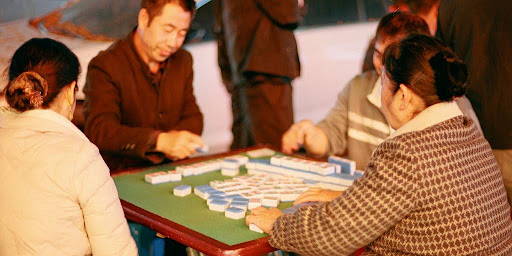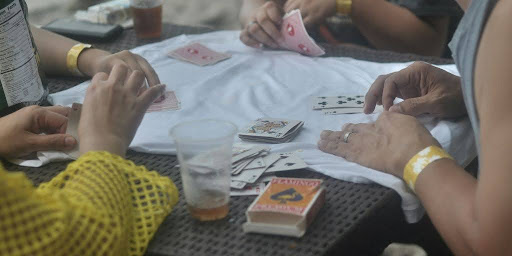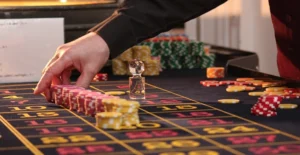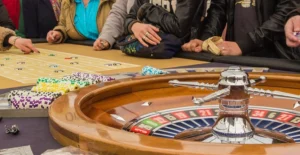Rummy, a card game enjoyed for generations, isn’t just one game; it’s a whole family of games. The basic idea of forming sets and sequences stays the same, but the details can change quite a bit. This means there are many different types of rummy card games out there, each offering a slightly different challenge or pace. Whether you like quick games or ones that take more strategy, there’s likely a rummy version you’ll enjoy.
Key Takeaways
- Rummy is a card game with many variations, all based on forming sets and sequences.
- Classic 13-Card Rummy is a common starting point, involving arranging cards into valid melds.
- Indian Rummy has sub-types like Points, Pool, and Deals Rummy, each with unique scoring or round structures.
- Gin Rummy is a popular two-player version focused on minimizing unmelded cards (deadwood) and often involves ‘knocking’.
- Other variations like 500 Rummy, Contract Rummy, and Shanghai Rummy offer different objectives, scoring systems, or multi-round challenges.
What Is Rummy? A Simple Introduction to Card Meld Games

Rummy is a family of card games where the main idea is to form combinations of cards. These combinations are called melds. You can make a meld in two ways: by creating a set or a run.
A set is when you have three or four cards of the same rank, like three 7s or four Kings. A run is when you have three or more cards in sequence, all from the same suit, such as the 4, 5, and 6 of Hearts.
Most rummy games involve drawing a card from a central pile or taking the last card discarded by another player, and then discarding one card from your hand. The goal is usually to be the first player to get rid of all your cards by forming valid melds. The specific number of cards dealt and the exact rules for forming melds can change quite a bit depending on the particular rummy game you’re playing.
How Rummy Games Work
- Dealing Cards: The game starts with dealing cards to each player. The number of cards varies; for instance, in some games, players get 10 cards, while in others, like Indian Rummy, it’s 13 cards.
- Drawing and Discarding: On your turn, you’ll draw a card from either the stock (face-down pile) or the discard pile (face-up card). After drawing, you must discard one card from your hand to the discard pile.
- Forming Melds: As you collect cards, you try to create valid sets or runs. Once you have a valid meld, you can lay it down on the table.
- Going Out: The game ends when a player successfully melds all their cards and has no cards left in their hand, or when they meet another specific winning condition for that particular game.
Rummy games are popular because they strike a good balance between luck and skill. While the cards you’re dealt have an element of chance, your decisions about which cards to keep, draw, and discard, and when to lay down your melds, require strategic thinking.
Key Components of Rummy
- Melds: These are the core of the game. They are either sets (three or four of the same rank) or runs (three or more sequential cards of the same suit).
- Stock: This is the pile of face-down cards from which players draw.
- Discard Pile: This is the pile of face-up cards that players discard onto. It’s often a source of cards for other players.
There are many variations of rummy card games, each with its own unique twists on these basic principles.
Classic 13‑Card Rummy Explained: Rules, Sets & Sequences
Classic 13-Card Rummy is a popular card game that forms the basis for many other variations. It’s played with two decks of cards and jokers, typically involving two to six players. Each player receives 13 cards, and the main goal is to arrange these cards into valid combinations of sets and sequences. The first player to successfully meld all their cards and declare wins the round.
Card Combinations: Sets and Sequences
Rummy revolves around creating two types of card groupings:
- Sets (or Books): A set consists of three or four cards of the same rank, but different suits. For example, three 7s (7 of Hearts, 7 of Diamonds, 7 of Spades) or four Kings (King of Clubs, King of Hearts, King of Diamonds, King of Spades).
- Sequences (or Runs): A sequence is a run of three or more cards of the same suit in consecutive order. For instance, 4, 5, 6 of Hearts or 9, 10, Jack of Spades. Sequences can be ‘pure’ or ‘impure’.
- A pure sequence has no wild cards (like Jokers) and consists of cards in natural order (e.g., 5, 6, 7 of Clubs).
- An impure sequence uses a wild card (like a Joker) to substitute for a missing card (e.g., 8 of Diamonds, Joker, 10 of Diamonds, where the Joker represents the 9 of Diamonds).
Gameplay Basics
Players take turns drawing a card from either the face-down discard pile or the face-up stock pile. After drawing, a player must discard one card from their hand onto the discard pile. This continues until a player believes they have formed all their cards into valid sets and sequences. That player then declares their hand, and all players reveal their cards. Points are then calculated based on the unmelded cards remaining in each player’s hand.
The strategic element of 13-Card Rummy lies in deciding which cards to keep, which to discard, and when to declare. Managing your hand to form both pure and impure sequences, while also aiming for sets, requires careful planning and a bit of luck.
Key Rules to Remember
- A valid hand must contain at least two sequences.
- One of these sequences must be a pure sequence.
- A player must declare their hand to win the round.
- Points are typically awarded based on the value of unmelded cards left in opponents’ hands.
Understanding these core mechanics is key to enjoying 13-card rummy.
Indian Rummy Variant: Points Rummy, Pool Rummy & Deals Rummy
Indian Rummy is a popular card game with several distinct variations that cater to different player preferences. These different rummy card games offer unique twists on the classic gameplay, making them engaging for both new and experienced players.
Points Rummy
Points Rummy is a fast-paced version where each game is played for a single round. Before the game starts, a point value is assigned to each card. Players aim to form valid sets and sequences. The first player to declare a valid hand wins the round. The winner’s score is calculated based on the points accumulated by the other players, multiplied by the agreed-upon point value. This variant is ideal for those who enjoy quick games.
Pool Rummy
In Pool Rummy, players contribute an entry fee to form a prize pool. The game continues over multiple rounds, to avoid elimination by staying below a predetermined point limit, often 101 or 201 points. Players who exceed this limit are out. The last player remaining, who has not been eliminated, wins the entire prize pool. This format suits players who prefer longer games with a knockout-style progression.
Deals Rummy
Deals Rummy is similar to Points Rummy, but the game is played over a set number of deals or rounds. Each player starts with an equal number of chips. Throughout the game, chips are exchanged between players based on wins and losses. The player who has the most chips at the end of all the deals is declared the winner. This variation is well-suited for players who enjoy extended gameplay and the opportunity to strategize over multiple rounds.
Each of these Indian Rummy variants offers a distinct experience, from the rapid-fire nature of Points Rummy to the strategic endurance required for Pool Rummy and the multi-round challenge of Deals Rummy. Understanding these differences can help you choose the game that best fits your playing style and desired game duration.
21‑Card Rummy (Indian Marriage): High‑Card Strategy & Pure Sequences
21‑Card Rummy, often called Indian Marriage, is a more involved version of the classic game, popular in India and played during festive times. It takes more time than the standard 13-card game, but many find it more engaging. The setup is similar to 13-card Rummy, but it uses three decks of cards instead of two. Each player gets 21 cards, and the goal is to arrange these into valid sets and sequences. A key part of this game is understanding the value of different cards and how they can be used to form these combinations.
Key Concepts in 21-Card Rummy
- Pure Sequences: These are runs of three or more cards of the same suit in consecutive order, like 7, 8, 9 of Hearts. They are essential for winning, as they don’t use any wild cards.
- Impure Sequences: These are similar to pure sequences but can include a Joker or a printed wild card to complete the run, such as 7, 8, Joker (as 9) of Hearts.
- Sets: A set consists of three or four cards of the same rank but different suits, like three Kings (King of Hearts, King of Diamonds, King of Spades).
- Wild Cards: Jokers and sometimes specific printed cards act as wild cards, meaning they can substitute for any other card to help form sequences or sets.
Gameplay Mechanics
Players are dealt 21 cards and must then organize them into three distinct hands. Each hand must meet specific melding requirements. The game often involves a strategic element of choosing which cards to keep and which to discard, aiming to complete the required melds efficiently. The player who successfully arranges their 21 cards into the required sets and sequences first is typically the winner.
The game requires careful planning and a good memory for the cards played. Players need to balance forming their melds with observing what opponents might be collecting, making it a mentally stimulating challenge.
Common Melding Requirements
While specific rules can vary, common objectives in 21-Card Rummy include:
- Forming at least three pure sequences.
- Creating specific combinations like three ‘Tunnelas’ (three cards of the same rank and suit, though this is less common and depends on the specific ruleset).
- Achieving a hand with eight Jokers or eight ‘Doubles’ (pairs of the same rank and suit, again, a less standard rule).
These requirements mean players must focus on building strong, unadulterated sequences, as they often carry significant weight in scoring or winning conditions. Understanding how to usewildcards effectively is also a major part of the strategy. The game is a test of patience and foresight, rewarding players who can adapt their strategy based on the cards they draw and the discards they see. It’s a game where careful card management and a bit of luck can lead to victory, making 21 Card Rummy a captivating experience for many players.
Gin Rummy: Two‑Player Skill Game with Knocking & Low Scores

Gin Rummy stands out as a highly popular two-player card game, often considered the quintessential Rummy experience by many. It’s a game that tests your ability to form melds – that means sets of three or four cards of the same rank, or runs of three or more cards in sequence, all of the same suit. The core objective is to be the first to meld all your cards, or to have the lowest point value in unmelded cards when you ‘knock’.
Players are dealt ten cards each. The game proceeds with players drawing a card from the deck or the discard pile and then discarding one card. A key strategic element is the ‘knock’. When a player believes the value of their unmelded cards is low enough (typically 10 points or less), they can choose to ‘knock’. This ends the round, and other players get one last chance to meld their cards and reduce their point count. Points are then tallied based on the unmelded cards remaining in each player’s hand. The player with the lowest score after several rounds is the winner. It’s a game where quick thinking and careful hand management are key to success, making it a favorite for those who enjoy a good mental challenge. For those interested in learning more about card games, exploring different online casino options can be a good starting point.
The Goal of Gin Rummy
The primary aim in Gin Rummy is to form your hand into valid melds (sets or runs) and minimize the value of any remaining unmelded cards. Players achieve this by drawing and discarding cards strategically. The game concludes when a player ‘knocks’ or when the stockpile runs out. The player with the lowest deadwood (unmelded cards) score wins the round.
500 Rummy (Persian & Canasta Styles): Reaching the 500‑Point Goal
The Goal: Reaching 500 Points
500 Rummy, also known as Persian Rummy, is a popular variation where the primary objective is to be the first player to accumulate 500 points over several rounds. Unlike some Rummy games that focus solely on being the first to meld all cards, 500 Rummy introduces a scoring system where players earn points for the cards they meld. This adds a layer of strategic depth, as players must balance forming melds with maximizing their point score.
Core Gameplay and Scoring
Players are typically dealt seven cards, and the game proceeds with players drawing from a stockpile and discarding. The key difference here is that when a player melds cards (forming sets or runs), they score points based on the value of those cards. Every card melded contributes to a player’s score for that round. Opponents also score points for cards left in their hands when another player goes out, but these are typically deducted from their total. This scoring mechanism means that even if you don’t go out first, you can still win the round if your melded cards have a higher point value.
Key Variations and Features
- Card Values: Different cards have different point values, which are crucial for strategic play. For instance, face cards and Aces often carry higher point values than number cards.
- Adding to Melds: A significant feature of 500 Rummy is the ability for players to add cards to existing melds, both their own and sometimes even those of their opponents (depending on the specific ruleset). This allows for dynamic gameplay and opportunities to improve scores or block opponents.
- Canasta Style: Some versions, particularly those influenced by Canasta, might incorporate special rules or wild cards, adding further complexity and strategic options.
- Partnerships: While often played individually, 500 Rummy can also be played in partnerships, where teammates combine their scores and melds.
The game’s scoring system encourages players to think not just about completing melds, but about the point value of the cards they are using. This can lead to interesting decisions, like holding onto a high-value card to meld later, even if it means a slightly slower progression towards going out.
Winning the Game
The game continues over multiple rounds until one player’s cumulative score reaches or exceeds 500 points. Careful management of your hand, strategic melding, and an eye on your opponents’ scores are all vital for achieving victory in this engaging Rummy variant. If you enjoy games that blend melding with a clear scoring objective, 500 Rummy rules might be exactly what you’re looking for.
Contract Rummy (Combination Rummy / Phase‑Style): Multi‑Round Challenges
Contract Rummy, also known as Combination Rummy or Phase-Style Rummy, is a game that tests your ability to adapt over several rounds. Unlike many rummy games where the goal is the same each time, here, each round presents a new challenge, a specific “contract” that you must fulfill. These contracts usually involve melding a certain combination of sets and runs. As the game progresses, these requirements typically become more demanding, pushing players to strategize carefully to meet each new objective.
It’s a game that shines with a group of three to five players, though four often hits the sweet spot for balanced gameplay. The multi-round structure means that even if you have a bad round, there are plenty of opportunities to catch up, making it a great choice for those who enjoy a longer, more involved card game experience.
The Contract Structure
In Contract Rummy, players are assigned specific melding requirements for each round. These requirements can be known to all players or sometimes kept secret, adding an element of surprise. Successfully meeting your contract earns you points, while failing to do so can result in penalties. The game is played over a set number of rounds, with each round’s contract escalating in difficulty.
Typical Contracts
While the exact contracts can vary, they often follow a progression. Here’s a general idea of what you might encounter:
- Round 1: Two sets (e.g., two sets of three cards each).
- Round 2: One set and one run (e.g., a set of three and a run of four).
- Round 3: Two runs (e.g., two runs of four cards each).
- Round 4: Three sets (e.g., three sets of three cards each).
- Round 5: One set and two runs.
- Round 6: Two sets and one run.
- Round 7: Three runs.
- Round 8: Four sets.
- Round 9: Two sets and two runs.
- Round 10: Four runs.
The beauty of Contract Rummy lies in its evolving nature. Each round demands a fresh approach, forcing players to manage their hands differently and plan to meet the upcoming contract. It’s not just about collecting cards; it’s about collecting the right cards for the current challenge.
This game is a fantastic way to experience different rummy mechanics within a single session, offering a good mix of luck and skill. If you enjoy games with clear objectives that change over time, Contract Rummy is worth exploring. It’s a game that rewards planning and adaptability, making each play session a unique puzzle to solve. For those looking for a structured yet flexible card game, Contract Rummy offers a rewarding experience.
Shanghai Rummy (California / Persian Rummy): Ten‑Round Seasonal Variant
Shanghai Rummy, also known as California Rummy or Persian Rummy, is a multi-round card game that spans ten rounds, each with its unique melding requirements. It’s typically played with three to five players, using two standard decks of cards plus jokers, which act as wild cards. Players are dealt 11 cards at the start of each round. The core objective remains to form valid melds – sets of the same rank or runs of consecutive cards in the same suit – and be the first to empty your hand by melding all your cards. What sets Shanghai Rummy apart is the progressive difficulty and changing contract for each round.
Round Structure and Melding Requirements
Each of the ten rounds presents a specific contract that players must fulfill. This contract dictates the types of melds that must be made in that round. For instance, one round might require two sets, another a set and a run, and subsequent rounds might demand more complex combinations or longer runs.
- Round 1: Two sets
- Round 2: One set and one run
- Round 3: Two runs
- Round 4: Three sets
- Round 5: Two sets and one run
- Round 6: One set and two runs
- Round 7: Three runs
- Round 8: Four sets
- Round 9: Two sets and two runs
- Round 10: Four runs
Gameplay Mechanics
On a player’s turn, they draw a card from either the stock or the discard pile. They then attempt to meld cards if they have met the round’s contract. After melding, or if they choose not to meld, they discard one card to end their turn. The round concludes when a player successfully melds all their cards and discards their final card. Players who cannot complete the round’s contract must keep their remaining cards, and their score for that round is the sum of the point values of those cards. The game continues for all ten rounds, and the player with the lowest total score at the end is the winner. This structure makes it a strategic game where managing your hand and anticipating opponents’ needs is key, much like in card roulette.
Oklahoma Rummy: Fast‑Paced, Joker‑Friendly Version of Gin Rummy
Oklahoma Rummy is a fun twist on the classic card game, often played with two decks and those handy jokers acting as wild cards. It’s a game that keeps you on your toes, especially with its unique scoring rule that changes each round. Everyone gets dealt ten cards, and the main goal is to put together valid sets and runs, just like in other rummy games.
The Oklahoma Twist: Point Limits
What makes Oklahoma Rummy stand out is the special rule that kicks in at the start of every round. A single card is flipped face-up from the deck, and its number dictates the maximum points you can have in unmatched cards when you declare your hand. So, if a 7 is turned over, your leftover cards can’t add up to more than 7 points. This adds a layer of strategy because you have to manage your hand carefully, knowing you might need to discard something valuable if the revealed card is low.
How a Round Plays Out
- Dealing: Each player receives ten cards from two standard decks, including jokers.
- The Reveal: A card is flipped to set the round’s point limit for unmatched cards.
- Gameplay: Players draw and discard, aiming to form sets (three or four of a kind) and runs (three or more consecutive cards of the same suit).
- Jokers: These are wild and can substitute for any card to complete a set or run.
- Declaring: A round ends when a player successfully melds all their cards and discards their last one. Other players then tally points for the cards remaining in their hands.
Winning the Game
After several rounds, the player who has accumulated the lowest total score is declared the winner. It’s a game that balances luck with smart hand management, and keeping an eye on that revealed card is key to success. It’s a great choice if you enjoy a faster pace and a bit of unpredictability in your rummy games.
Oklahoma Rummy is a good pick for players who like a bit of a challenge and enjoy games where the rules can shift slightly from round to round, keeping things interesting.
Kalooki Rummy and Dummy Rummy: Jamaica’s Creative Contract Games
Kalooki Rummy
Kalooki is a popular rummy variant originating from Jamaica, often played with two decks of cards and jokers. It’s a contract-style game, meaning players must complete a series of specific hand combinations, or ‘contracts,’ in a set order over multiple rounds. Each contract has its requirements for melding cards into sets (three or four of a kind) or runs (three or more consecutive cards of the same suit).
The game typically involves drawing and discarding cards to form these melds, with the ultimate goal of being the first to complete all the required contracts. Players might also have to manage their discards carefully, as opponents can sometimes pick up discarded cards to complete their own hands. The complexity and order of the contracts can vary, adding a strategic layer to the gameplay.
Dummy Rummy
Dummy Rummy, also a Jamaican favorite, shares similarities with Kalooki but often features a slightly different structure. Like Kalooki, it’s played over several rounds, with each round presenting a new objective or ‘hand’ to be completed. Players are dealt a set number of cards, usually 13, and must use them to form the required melds.
What makes Dummy Rummy distinct is the concept of a ‘dummy’ hand. In some versions, a player might have a second, hidden hand that they can use to supplement their main hand, adding an element of surprise and tactical depth. Successfully melding all required cards and emptying your hand first is key to winning each round and the overall game. It’s a game that rewards planning and adaptability, making it quite engaging for players who enjoy a bit of a challenge.
Key Differences and Similarities
Both Kalooki and Dummy Rummy are contract-based rummy games, which sets them apart from simpler variants like Gin Rummy. They require players to achieve specific goals in sequence, rather than just melding any valid combination. This multi-round, objective-driven format makes them more involved and strategic.
- Contract Focus: Both games revolve around completing a series of predefined melds or ‘contracts.’
- Multi-Round Play: Games are played over multiple rounds, with objectives changing each round.
- Jamaican Origin: Both are strongly associated with Jamaican card game culture.
- Strategic Depth: The sequential nature of contracts and potential for hand manipulation add layers of strategy.
While both games are contract-based, the specific contracts, the number of cards dealt, and the rules regarding picking up discards can differ. These variations mean that while the core concept is similar, the actual gameplay experience can feel quite distinct between Kalooki and Dummy Rummy. Learning the specific contract requirements for each game is essential for success.
For those interested in exploring different rummy styles, understanding these Jamaican contract games offers a glimpse into a more structured and challenging side of rummy. If you’re looking for a game that requires more than just luck, these variants are worth trying. You might even find yourself looking for casino news and updates to see if these games are offered in a digital format.
Penang Rummy & Robbers’ Rummy: Manipulation‑Heavy Southeast Asian Styles

Penang Rummy and Robbers’ Rummy are two fascinating variations that hail from Southeast Asia, particularly Malaysia and Singapore. They share a common thread of strategic manipulation and can lead to some really interesting gameplay dynamics. If you enjoy a game where you have to think a few steps ahead and maybe even play a little bit of mind games with your opponents, these might be right up your alley.
Penang Rummy
Penang Rummy is a game that rewards players who can manage their hands and anticipate their opponents’ moves. It’s often played with two decks of cards, and the goal is to be the first to meld all your cards into valid sets or runs. What makes it stand out is the emphasis on discarding strategically. You can’t just throw away any card; you need to consider what your discard might allow your opponents to do. A key aspect is the “going out” process, which often involves melding all your cards and having a single card left to discard. This final discard is crucial, as it can sometimes be used to block an opponent or set up your win.
Robbers’ Rummy
Robbers’ Rummy, sometimes known as “Robbers” or “Robber’s Rummy,” is another game that thrives on clever play and a bit of calculated risk. Like Penang Rummy, it typically uses multiple decks and involves forming melds. The “robber” element comes into play with how players can interact with each other’s melds. In some versions, players might be able to take cards from an opponent’s melded sets or runs, provided they can meet certain conditions. This adds a layer of direct interaction and potential disruption to the game. It’s a game where you might see a player’s carefully constructed meld suddenly get broken up by a well-timed move from another player. This makes keeping an eye on what everyone else is doing incredibly important. It’s a bit like playing Face Up Pai Gow Poker in that you can see some of what your opponent is trying to do, but with rummy, the interaction is much more direct and can change the game’s flow dramatically.
Which Rummy Type Should You Try? Choosing Based on Players, Speed & Strategy

Choosing the right Rummy game depends on what you’re looking for in a card game. Are you playing with a big group, or just a couple of people? Do you want something quick, or are you up for a longer session with more strategy? Let’s break down some popular options to help you decide.
For Quick Games and Casual Play
If you’re short on time or just want a straightforward game, Points Rummy is a fantastic choice. It’s a single-round game where the goal is to be the first to form valid sequences and sets. The scoring is based on the cards left in opponents’ hands, making it fast-paced and exciting. It’s a great way to get into the Rummy spirit without a huge time commitment.
For Longer Sessions and Strategic Depth
Players who enjoy a more involved experience might prefer Deals Rummy or Pool Rummy. In Deals Rummy, the game is played over a set number of deals, and players start with a fixed number of chips. The winner is the one with the most chips at the end, which allows for comebacks and strategic chip management over multiple rounds. Pool Rummy is similar in that it’s played over several rounds, but the objective is usually to avoid reaching a certain score limit, adding a different kind of pressure.
For Two Players and Skill Focus
Gin Rummy is the go-to for many when it comes to two-player Rummy. It’s a game that rewards skill and careful hand management. The ‘knocking’ mechanic, where you can end the round with a low deadwood score, adds a layer of tactical decision-making. It’s a classic for a reason, offering a good balance of luck and strategy.
For Variety and Progressive Challenges
If you like games that change and get tougher as you go, Contract Rummy is worth a look. This game is played over multiple rounds, with each round requiring players to form specific melds. It’s a great way to keep things interesting and test your adaptability. Similarly, Shanghai Rummy offers a ten-round structure that can feel like a seasonal tournament, providing a structured progression of challenges.
For a Taste of Indian Rummy Culture
Indian Rummy itself, particularly its variations like Points, Pool, and Deals Rummy, is incredibly popular. It often involves 13 cards and the use of Jokers, adding a dynamic element. If you’re interested in the specific cultural nuances and popular ways the game is played in India, exploring these variants is a must. Learning about impure sequences is key here.
For a Unique Twist
500 Rummy (also known as Pinochle Rummy or Canasta-style Rummy) introduces a point-scoring system where the goal is to reach 500 points. This can lead to longer, more strategic games. Oklahoma Rummy is a faster, Joker-heavy version of Gin Rummy, perfect for those who enjoy a bit more unpredictability. For those seeking a truly different experience, games like Kalooki Rummy and Penang Rummy offer unique mechanics and regional flavors, often involving more complex contract requirements or manipulative play.
Ultimately, the best Rummy type is the one that best fits your playing group and your mood. Don’t be afraid to try a few different ones to see what clicks!
Frequently Asked Questions
How many different types of Rummy games are there?
There are many different kinds of Rummy! While the core idea of making sets and runs stays the same, each version has its own special rules. Some popular ones include 13-Card Rummy, Gin Rummy, and Indian Rummy. It’s like having different flavors of the same ice cream – all good, but with unique tastes.
Are all Rummy variations identical?
No, not all Rummy games are the same. Think of it like this: the main goal is to make groups of cards, like three of the same number or a sequence of cards in the same suit. However, the number of cards you get, how you score points, and even special rules like using wild cards can change from one game to another.
What is the name for 7-card Rummy?
While some Rummy games might use fewer cards, the most well-known version that plays with 13 cards is just called ’13-Card Rummy’ or sometimes ‘Indian Rummy’. There isn’t a specific name just for a 7-card version that’s widely recognized, though people might just refer to it as ‘7-card Rummy’.
Which type of Rummy is considered the best?
The ‘best’ Rummy game depends on what you like! If you enjoy a quick game with two players, Gin Rummy is fantastic. If you like more players and a bit more strategy, 13-Card Rummy or Indian Rummy might be more your style. It’s all about personal preference and who you’re playing with.
What are the main goals when playing Rummy?
Most Rummy games involve making ‘melds.’ These are groups of cards that are either all the same rank (like three Kings) or a sequence of cards in the same suit (like 4, 5, 6 of Hearts). The goal is to get rid of all your cards by making these melds.
Do Rummy games use Jokers?
Yes, many Rummy games use Jokers! They act as ‘wild cards,’ meaning you can use them to stand in for any other card you need to complete a meld. This can make the game a bit easier and add an exciting twist.
Is Rummy a difficult game to learn?
Playing Rummy can be a great way to practice your thinking skills. You need to pay attention to the cards you have, the cards others are picking up, and plan your moves. It’s a good mental workout, kind of like solving a puzzle!
Is Rummy a good game for social gatherings?
Absolutely! Rummy is fantastic for playing with friends and family. Because there are so many different versions, you can find one that fits the number of players you have and how much time you want to spend playing. It’s a game that brings people together.
Daniel Chase is a seasoned casino analyst and iGaming writer with over 10 years of experience in the online gambling industry. He specializes in game strategy, casino odds, and player-focused reviews. Daniel is passionate about helping players make smarter decisions through transparency, real data, and honest insight.











